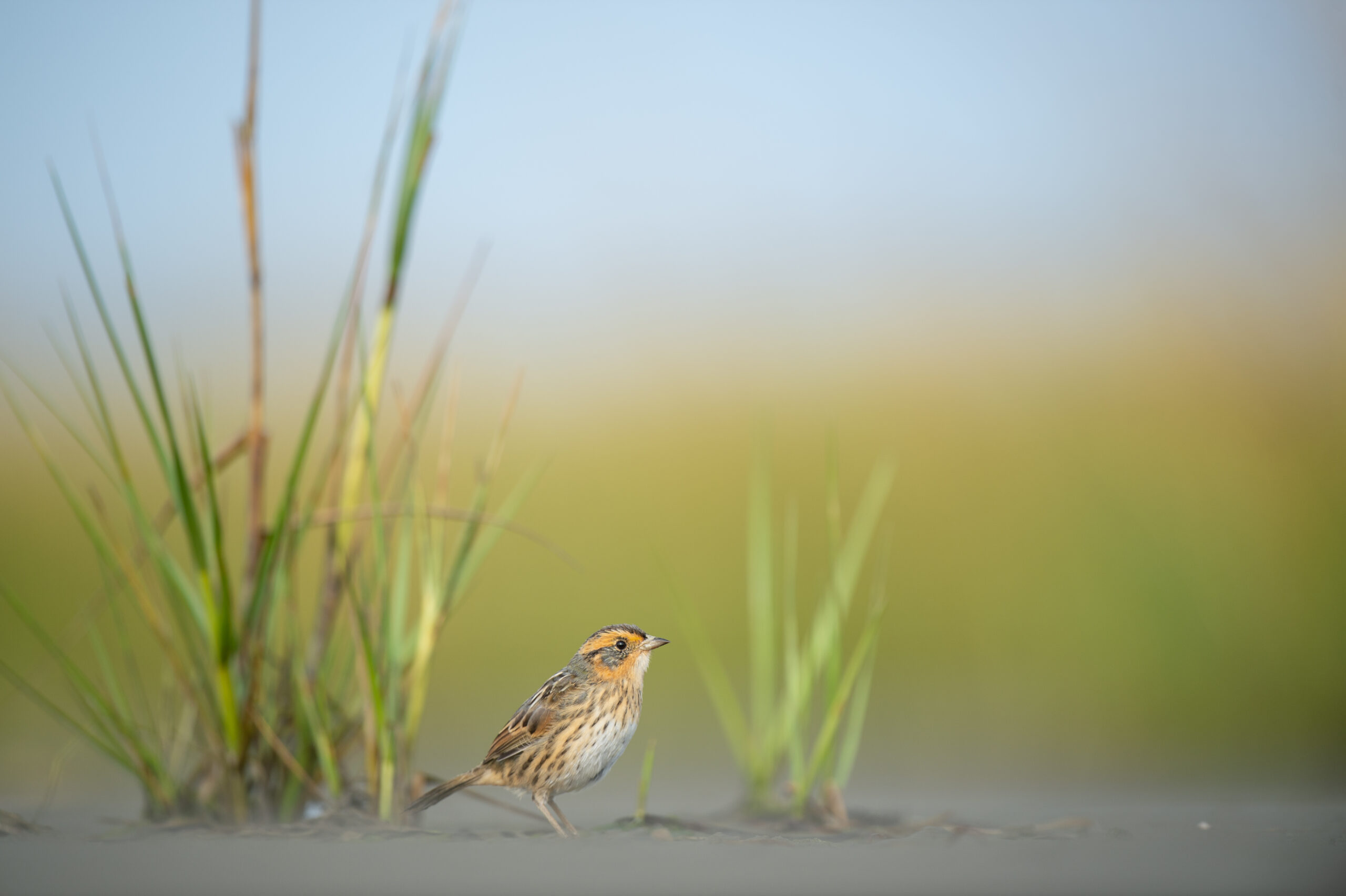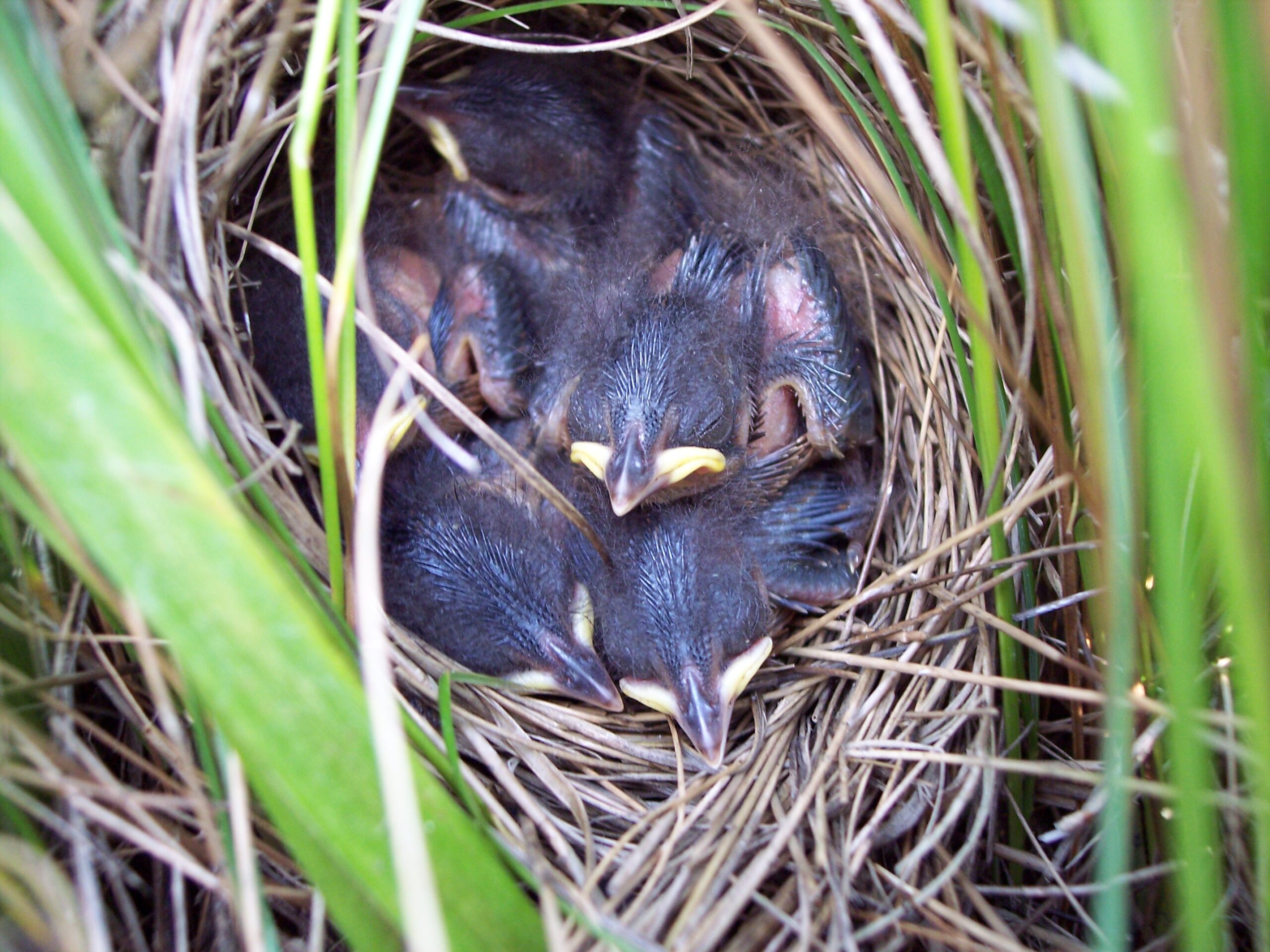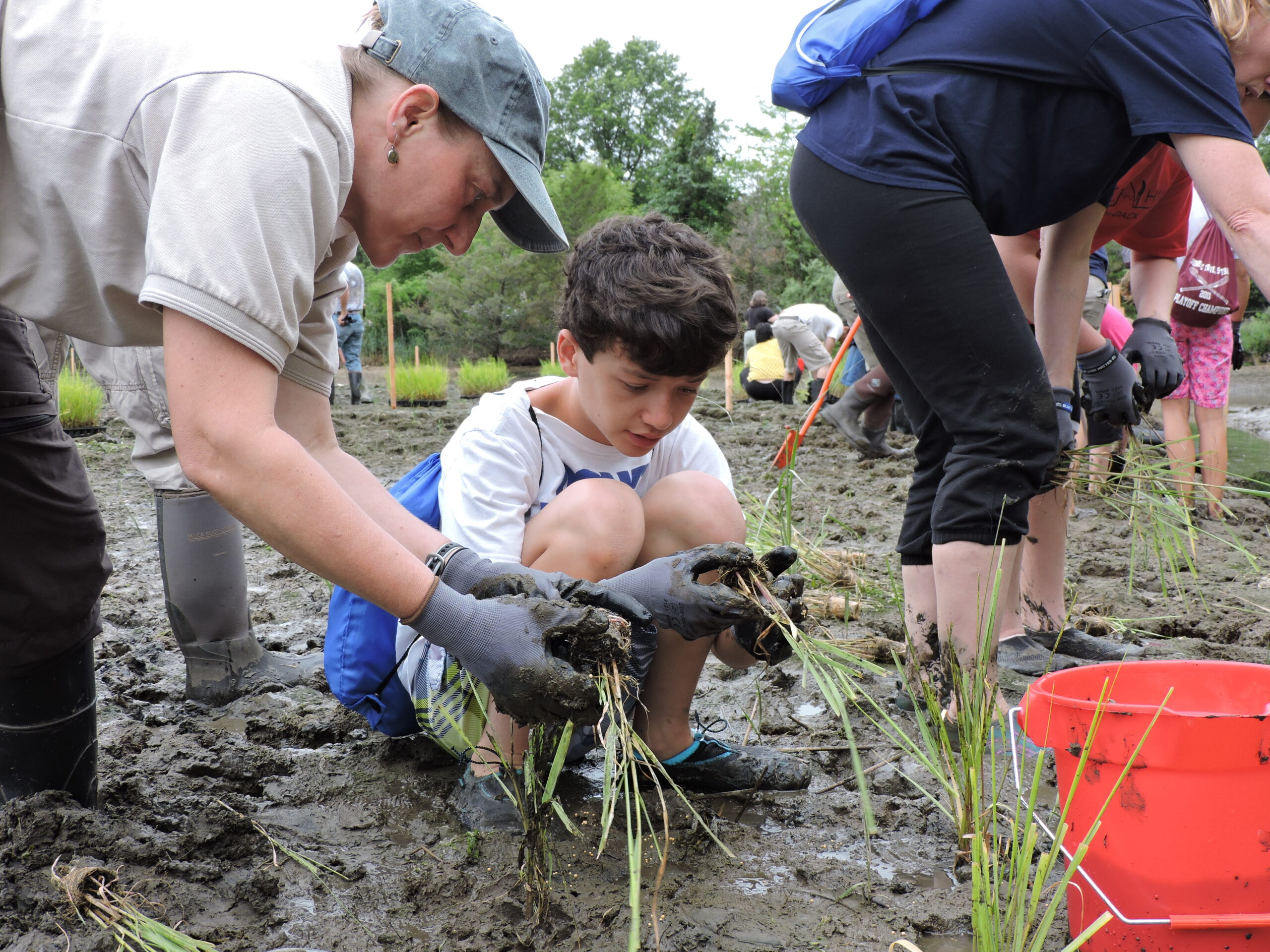Saltmarsh Sparrow Plan
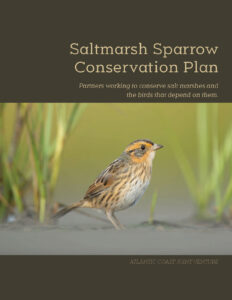 The ACJV published its Saltmarsh Sparrow Conservation Plan in September 2020. This plan builds upon the strategies developed in the Salt Marsh Bird Conservation Plan. Nearly all of the strategies from that plan are included in the Saltmarsh Sparrow Plan in addition to several new strategies that are specific to Saltmarsh Sparrow conservation. In particular, a suite of strategies have been developed that specifically address population enhancement. These include things like predator control, manipulating existing tide gate infrastructure to dampen flooding tides during the breeding season and creating microtopography for nesting sparrows. These strategies are supporting specific state by state population and habitat objectives. Together, they form a road map to a sustainable population of Saltmarsh Sparrows.
The ACJV published its Saltmarsh Sparrow Conservation Plan in September 2020. This plan builds upon the strategies developed in the Salt Marsh Bird Conservation Plan. Nearly all of the strategies from that plan are included in the Saltmarsh Sparrow Plan in addition to several new strategies that are specific to Saltmarsh Sparrow conservation. In particular, a suite of strategies have been developed that specifically address population enhancement. These include things like predator control, manipulating existing tide gate infrastructure to dampen flooding tides during the breeding season and creating microtopography for nesting sparrows. These strategies are supporting specific state by state population and habitat objectives. Together, they form a road map to a sustainable population of Saltmarsh Sparrows.
Saltmarsh Sparrow Habitat Prioritization Tool 2.0
The ACJV recently completed the Saltmarsh Sparrow Habitat Prioritization Tool version 2.0. This tool prioritizes and ranks more than 8,600 mapped salt marsh patches according to their predicted habitat value for Saltmarsh Sparrows. Patches were ranked on a variety of factors that are likely to affect long-term habitat quality, including sea level rise, resiliency, acreage of high marsh habitat and degree of tidal restriction, among others. You can now view ranked results for the whole region, for an individual state, or for National Wildlife Refuges. The highest ranked patches are those on which managers should consider directing management attention because it may take less effort to improve habitat quality to the level where population growth can be supported. The tool also shows priority areas to protect for marsh migration, and existing protected areas, so managers can better pinpoint opportunities for land protection in the marsh migration zone.
Working on the Ground for Saltmarsh Sparrow Conservation
Our partners have worked hard to achieve goals outlined in the Saltmarsh Sparrow Conservation Plan by ramping up efforts to conserve Saltmarsh Sparrow across the ACJV area. Here are just a few examples of the many projects ongoing across the region:
- Connecticut DEEP successfully submitted a one million dollar Competitive State Wildlife Grant proposal to test several of the promising management actions laid out in the Salt Marsh Bird and Saltmarsh Sparrow Plans to improve high marsh habitat for Saltmarsh Sparrows. This grant will cover projects in CT, ME, MA, RI, MD and VA. Collectively the projects will restore or enhance more than 1,600 acres of salt marsh by 2025, 77% of which is high marsh.
-
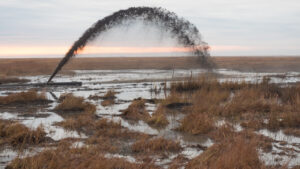
Sediment is sprayed onto marsh. Dave Harp
University of Connecticut and Connecticut DEEP received an EPA Long Island Sound Study grant to test different aspects of thin layer placement projects across 150 experimental plots (e.g., examining effects of sediment texture and tidal amplitude) and evaluate whether small plots are representative of management-scale applications.
- ACJV staff have worked with the USFWS New Jersey Field Office, Delaware Bay Coastal Program, Forsythe NWR, New Jersey DEP, and a host of NGO partners to organize a new partnership to increase communication, coordination and collaboration around Delaware Bay and up New Jersey’s Atlantic Coast. The effort kicked off with two day-long workshops in March, 2020, and a series of virtual meetings and webinars during the year.
- In Buzzards Bay, Massachusetts and Rhode Island and a host of NGO partners successfully pursued EPA funds to collaboratively plan and implement some of the promising management actions in the ACJV’s Saltmarsh Sparrow plan. They ultimately hope to create a demonstration site showcasing various management approaches in the area around Allens Pond, one of Mass Audubon’s key sanctuaries.
- Partners like Audubon are now focused on Saltmarsh Sparrow throughout its annual cycle, engaging their offices and staff from Maine to Florida. In New York and Connecticut, for example, Audubon staff have acquired grant funds to hire new staff to lead salt marsh conservation planning and implementation efforts.
- ACJV staff worked with partners to develop successful proposals for the NAWCA and National Coastal Wetland Conservation Grant programs, which will fund several high-priority projects to protect and restore salt marshes and important marsh migration areas in Maine, Massachusetts, Connecticut, Virginia, North Carolina, South Carolina, Georgia, and Florida [LINK TO article above/below].
- The FWS Saltmarsh Sparrow team has been hosting webinars on ‘all things SALS’ over the past year. Topics have included prioritization tools, planning efforts, management guidance, and implementation practices – all focused on providing managers with important information to strategically conserve this species.
Saltmarsh Sparrow Executive Committee
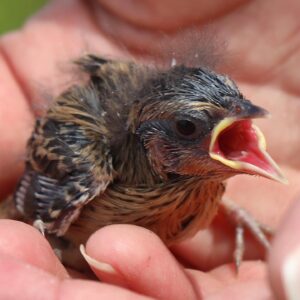
Saltmarsh Sparrow chick. USFWS/David Eisenhower
Saltmarsh Sparrows are declining rapidly and much work remains to build resiliency in the 80,000 acres of habitat that are required to support our population goal. In an effort to catalyze conservation, the FWS has formed a Saltmarsh Sparrow Executive Committee comprised of state and federal partners in the Saltmarsh Sparrow breeding range. The Committee will focus on securing conservation commitments from stakeholders, providing funding, influencing policy and regulations, and maintaining momentum and accountability toward conservation objectives. The ACJV is supporting the work of this group with maps, data products and coordinating assistance designed to inform coordination.
Saltmarsh Sparrow Information, Tools, Resources, and Communication
In an effort to streamline the ACJV website and provide our partners with all the latest information, tools, webinars, and resources on Saltmarsh Sparrow, we have redesigned our website and species imitative pages. Check out all the Saltmarsh Sparrow goodies here!

